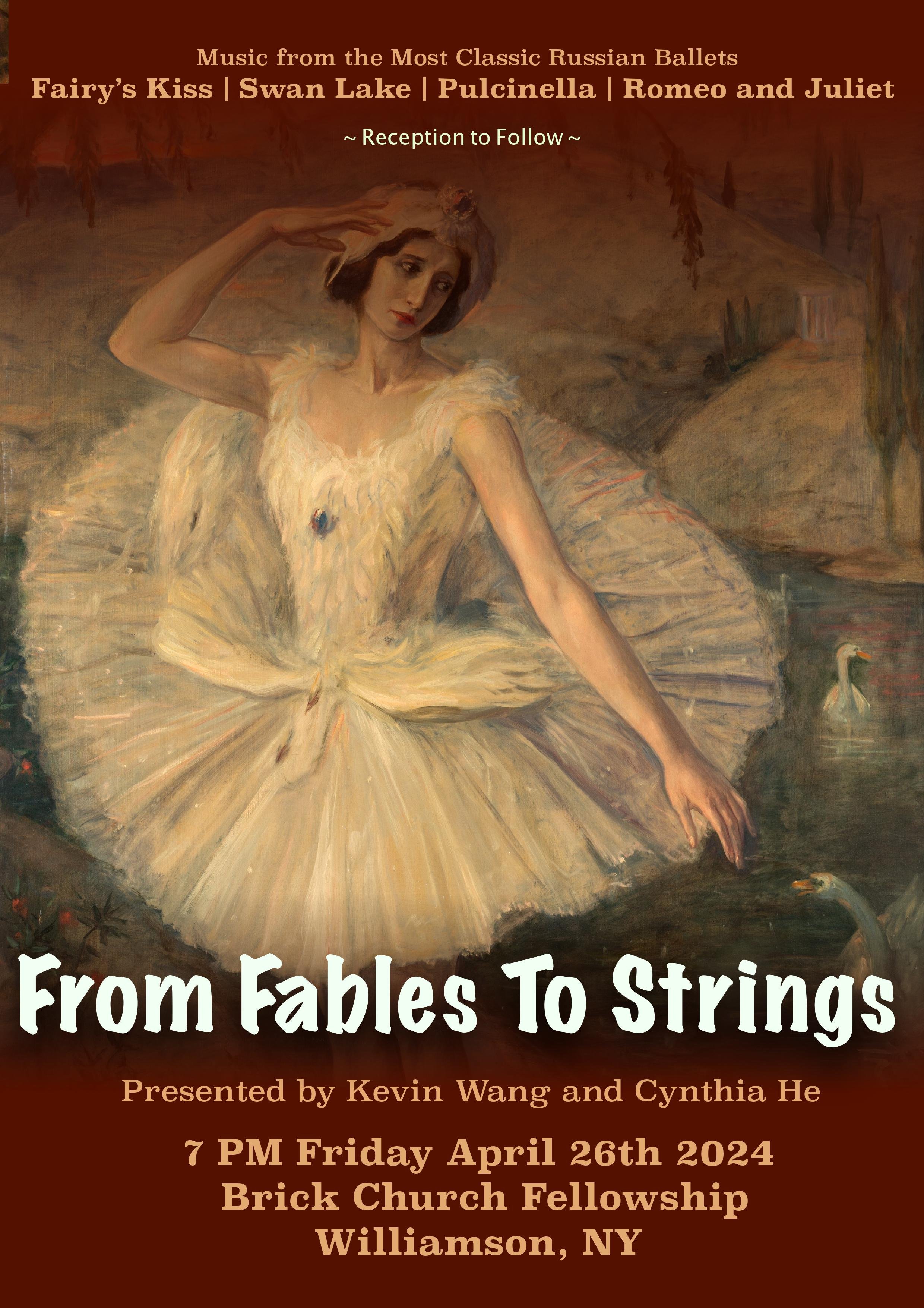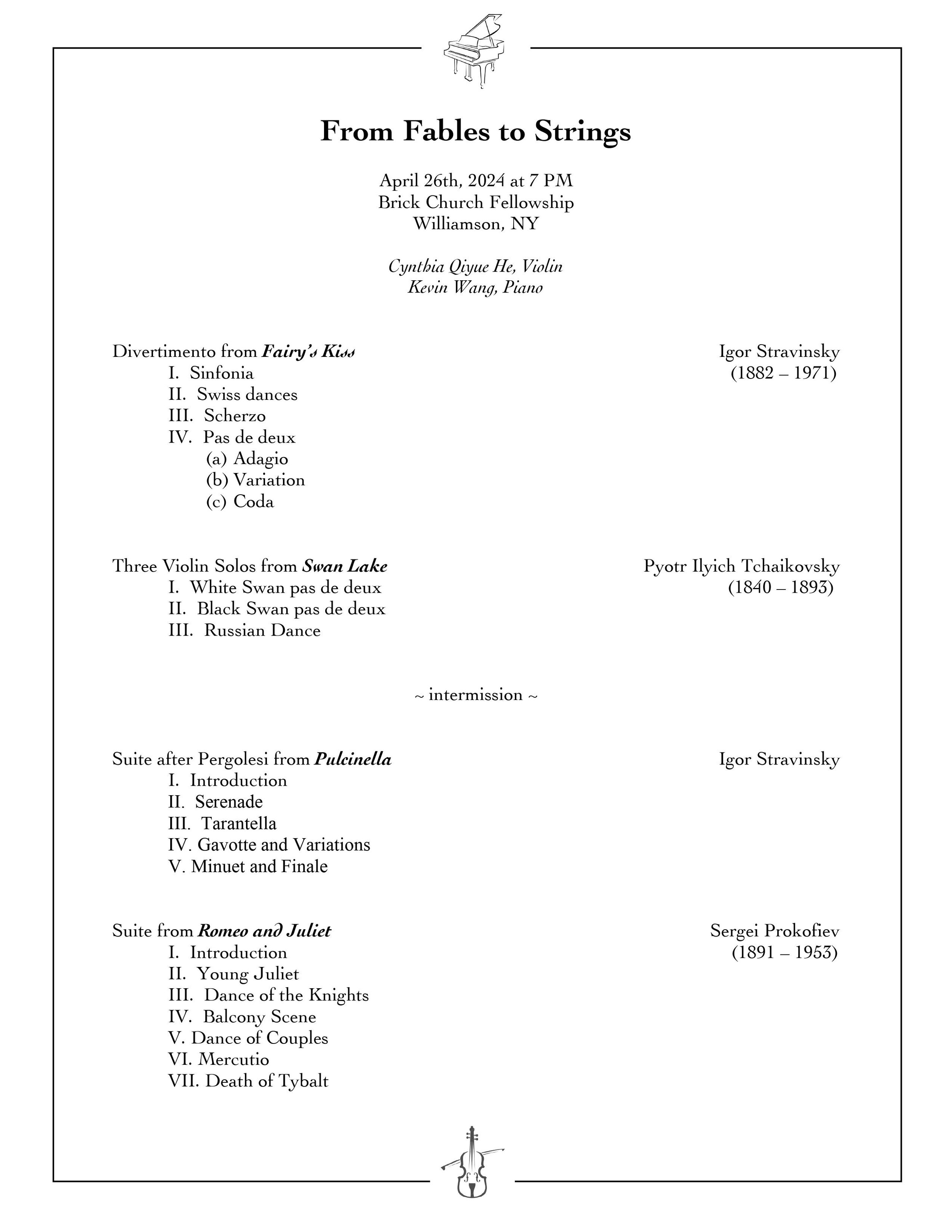Program Notes
The story is based on Hans Christian Anderson’s Ice Maiden which suggests an allegory of Tchaikovsky whom Stravinsky is paying homage to. The story posits Tchaikovsky as the young man, being separated from his mother early in his life, and the fairy as his wicked muse who stole him away from his loving public.
Fairy’s Kiss by Stravinsky
In a storm, a fairy departs an infant from his mother, imprints a kiss on the boy’s forehead, and goes away. The country folk find the boy and take him with them. Twenty years later, the boy, now a grown man in the village at the peak of his happiness, has fallen in love. The Fairy approaches him again and attempts to lure him to join her. The young man refuses and chooses to stay with his fiancée. The fairy repeats the fatal kiss, subjecting the young man to her will and taking him away forever to a land beyond time and place.
The story is based on Hans Christian Anderson’s Ice Maiden which suggests an allegory of Tchaikovsky whom Stravinsky is paying homage to. The story posits Tchaikovsky as the young man, being separated from his mother early in his life, and the fairy as his wicked muse who stole him away from his loving public.
Swan Lake’s premiere in 1876 was not well received. The choreography was criticized as “unimaginative” and Tchaikovsky’s music was considered “too German”. Several revisions of the work occurred over the next few years. As prima ballerinas asked for new dances, Tchaikovsky wrote new music to fit the new choreography. One of the newly-composed pieces is the Russian Dance which accompanies Prince Siegfried’s dance with the young princesses at the ball.
Swan lake by Tchaikovsky
Under the spell cast by evil sorcerer Baron von Rothbart, Princess Odette and her companions transform into swans during the day and only return to their human form at night. The only thing can break the spell is true love. Prince Siegfried encounters Odette on a hunting trip one night and falls in love with her. This love is expressed in the gentle and tender White Swan pas de deux. To prevent his spell from being broken, Baron von Rothbart transforms his daughter Odile to look exactly like Odette and presents her at Prince Siegfried’s birthday party. In the castle’s ball room, the prince is utterly captivated by Odile’s beauty and proposes to her. The Black Swan pas de deux, filled with seduction, depicts the moment when the prince is beguiled by the imposter.
Swan Lake’s premiere in 1876 was not well received. The choreography was criticized as “unimaginative” and Tchaikovsky’s music was considered “too German”. Several revisions of the work occurred over the next few years. As prima ballerinas asked for new dances, Tchaikovsky wrote new music to fit the new choreography. One of the newly-composed pieces is the Russian Dance which accompanies Prince Siegfried’s dance with the young princesses at the ball.
Pulcinella by Stravinsky
The story, taken from an 18th century Italian comedy, is about Pulcinella’s love affairs. Despite his love for his girlfriend Pimpinella, Pulcinella cannot stop seducing other women, and his infidelity gets him into trouble. To avoid being killed by other men out of jealousy, Pulcinella pretends to be slain. His friend Furbo, disguised as a magician, comes to resurrect Pulcinella in front of everyone. This set-up event also gains Pimpinella’s forgiveness of him. The ballet ends with the marriages of three couples.
Romeo and Juliet by Prokofiev
William Shakespeare’s tragic play, revolving around Romeo Montague and Juliet Capulet, who belong to two noble families that are sworn enemies, falling madly in love, has inspired numerous music compositions, from intimate songs to monumental symphonic works.

